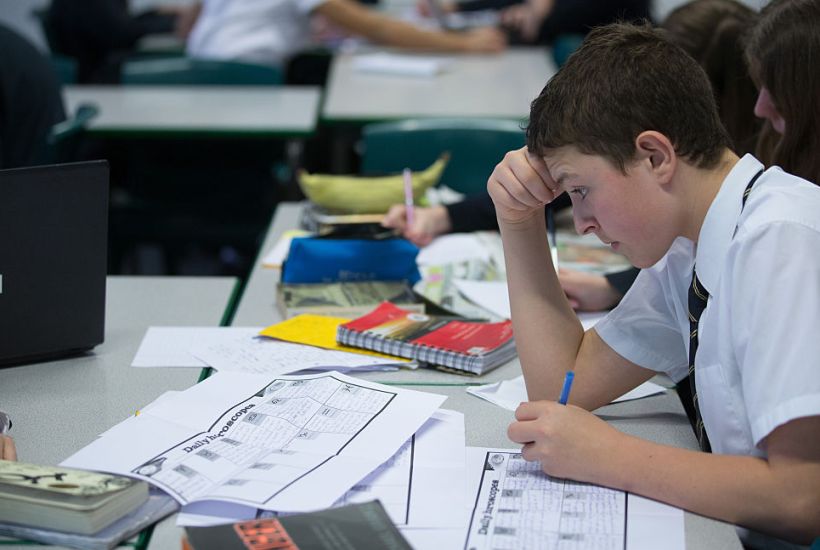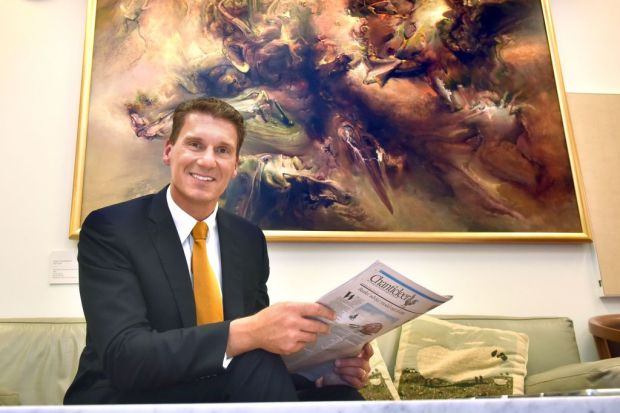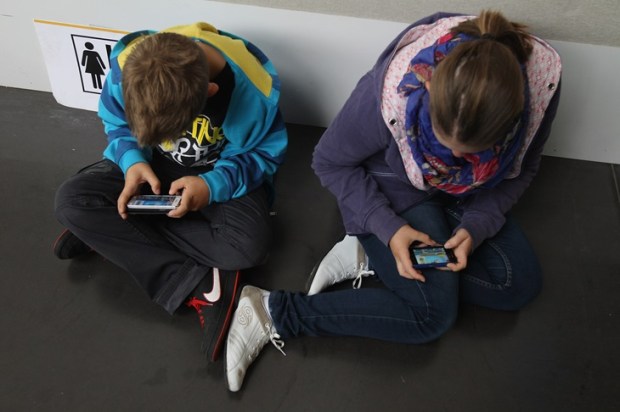A few days ago, I received the latest edition of the ‘The Butler Bulletin’ in the mail from my local Federal MP Terri Butler. The lead article was about how terrible the Federal Budget was and that the Prime Minister is cutting funding to schools so that he can give tax cuts to ‘big business’.
The style of writing was somewhere between a Maurice Blackburn lawyer, a GetUp! activist and an indoctrinated primary school student. Scary numbers and buzzwords are splashed around to elicit all the right emotional responses from the fan base. The main photo was of an innocent looking student looking out at us with a pencil in her hand. The imagery pleaded ‘Help protect me from the evil PM’ with the red filter adding to the sense of danger. $22 Billion Cut From Schools! Big Business! See how scary that sounded? Fortunately for the terrorised students of Australia, Labor will ‘fight for fair’ in a Maurice Blackburn-GetUp! kind of way.
Yeah. We’ve heard it all before. Every election.
The latest round of ‘more cash = better outcomes’ comes from the last Federal Budget and the Prime Minister’s appropriation of the Gonski brand.
All of this is an excellent opportunity to remind the taxpayers of Australia out there that the government is spectacularly bad at running education services, just like other things it has no business being involved in.
There is an old retail sales technique where in the mind of the customer you attempt to limit their choices to two or at the most three options. For example if you sell fridges, where there is often ten or so options to pick from, you attempt to bring the customers focus onto the two that you would like them to pick from and make the discussion all about those fridges. Note: this doesn’t happen in socialist countries, they’re lucky if they have one fridge to pick from and the power to make it work. In most cases this works, the others are ‘forgotten’ for all intents and purposes and the choice becomes simple: fridge A or fridge B. In a highly sophisticated ‘tax-juggle-obfuscate-twist-jargon-spend’ type of system, this is what’s happening with the discussion about education.
For Joe Average out there working a job, busy living life and providing, there isn’t a lot of time to actually consider what education is all about and how it’s provided. As long as anyone can remember, the government has been the main provider of education. So when they hear a ‘discussion’, I use the term loosely, about how to deliver education services, they tend to get the impression that it’s a choice between Option A (whatever the Liberal Party says today) and Option B (whatever the Labor party says today) and after a robust debate the best way forward will be found.
Well instead of the Gonski model of school funding, how about the ‘stop taxing me so much so I can fund my child’s education directly without the government middle man’ model of education funding?
I know that doesn’t quite roll off the tongue like ‘Gonski’ but it is so much more honest and simple.
Buying education services is basically the same as purchasing other services and you are paying dearly. The key difference between this service and other services is that someone else (the government) uses your money (taxes) to purchase those services on your behalf.
This happens in virtually no other area of society except health care.
Here are some of the things the government doesn’t use your money to purchase on your behalf and then force you to use:
- Food
- Clothing
- Housing (unless you’re in extreme poverty)
- Entertainment
- Tertiary education
- Dating services
- Travel
- Taxis
- Beauty and grooming products
- Books
- Financial planning
- Lending
- Electronic products
- Kitchen appliances
- Camping equipment
- Phones
The list goes on and on.
For some reason the state insists on getting in between the buyer and seller in this transaction. Why?
In The Weekend Australian, Henry Ergas has written an excellent piece about the problems with public school funding generally and the Gonski model in particular:
What then should be done? Many of the Turnbull government’s initiatives go in the right direction. But other changes are vitally needed. Specifying the goals the funding arrangements ought to pursue would be a crucial start. At the heart of those goals should be ensuring that as many parents as possible can choose between good options, including public, independent and Catholic schools, on a basis not distorted by government policy.
To say that isn’t to suggest choice is a panacea: but suppressing it gives state schools monopoly power over the supply of education to disadvantaged families and to many others, weakening the incentives for quality teaching.
And thanks to that monopoly power, it is not Australian kids who benefit from the torrents of public spending – all too often, it is the teachers unions, who can grab the additional dollars for themselves in the form of more jobs, higher pay and less demanding working conditions.
The best way to undermine that market power is to make funding truly follow students. Parents and kids would then determine the allocation of funding on the basis of merit, rather than the sector’s vying for taxpayer dollars on the basis of political clout and of noisy public stoushes.
It is not surprising that one of Australia’s leading economists comes to a similar conclusion as one of the greatest economists of the twentieth century, Milton Friedman: that market forces are the greatest way to improve education with parents in control of the purchasing choice.
Herein lies the main reason that the state wants to retain control of this service: control.
Control for the power of unions and their conditions and control of the information your children are exposed to with the Safe Schools program being the latest in a long list of ideological disasters. This particular program, like many highly controversial programs foisted onto unsuspecting kids, was done without parental consent or even knowledge. This sort of thing will only take place, by and large, in public schools where decisions are made out of sight of parents, and there is a situation of control without consent.
In a school that could close if you move your child down the road, this type of underhanded mind-meddling could never take place without your approval because the power to continue rests with you, the consumer. Consumer power is one of the most powerful social forces available. If the school’s income depends on your choice, no school will lightly violate your parental wishes.
Besides the ideological issues, there is the sheer mass of administration costs and burdensome bureaucratic requirements. Almost all of this could be eliminated with the state providing a regulatory role ensuring minimum standards are met and those who teach are appropriately qualified. The market will do the rest.
It will be your school, your choice, the way you want your child educated. If you don’t want a school teaching ‘gender fluid theory’, you don’t have to have it. Don’t want to waste your child’s time with ‘social inclusivity training’? then go to a school that doesn’t teach it. Aren’t really grooving on the latest ‘sexuality education curriculum’? then give it a miss. Got a school that’s incapable of controlling bullying? then end it by removing your dollars. You can select a school that focuses on the things that really matter and are important to you and your family.
One objection to this system that will be raised is the ability of parents to make informed choices. After all, education is a complicated business and how will you know which is a good school and which is not? This type of issue will again be sorted out by the marketplace in two ways. Firstly, independent educators will provide assessments and rankings of schools the same way that professionals analyse and rank companies. The second method will be the most ancient and reliable of all, reputation. If you get a bad rep, your school is finished; get a good rep and you’ll flourish.
For some this concept will be quite new but just consider the implications of your purchasing power in everyday life. In the real world, spending patterns are an indicator of value, i.e. if we ‘value’ something we will spend our money (for which we gave up many hours of our life), on it. If we don’t attribute value to something, we don’t allocate our dollars towards it. If a cafe sells garbage coffee of gives poor service, it’s by-by, end of cafe.
Public sector schools account for only 10 percent of the best performing schools and 95 percent of the worst. Given a choice, would you continue to fund a system that continually provided such a bad service? Would you willingly buy from a company that continually produced 95 percent of all failing products in any given category?
So the next time someone offers you a great value Gonski that’s just too good to refuse, refuse. Tell them you’d rather keep your money and spend it on open market place education and you don’t need a middleman to do it.
Stephen Cable writes at cablecritique.com and for Liberty Works in Brisbane.
Got something to add? Join the discussion and comment below.
Got something to add? Join the discussion and comment below.
Get 10 issues for just $10
Subscribe to The Spectator Australia today for the next 10 magazine issues, plus full online access, for just $10.


























Comments
Don't miss out
Join the conversation with other Spectator Australia readers. Subscribe to leave a comment.
SUBSCRIBEAlready a subscriber? Log in